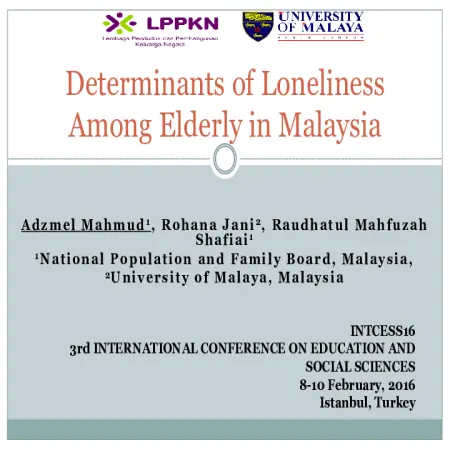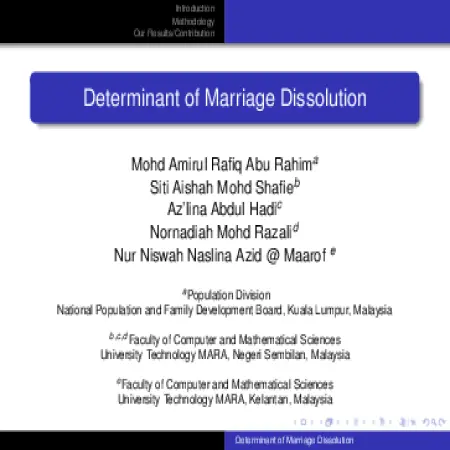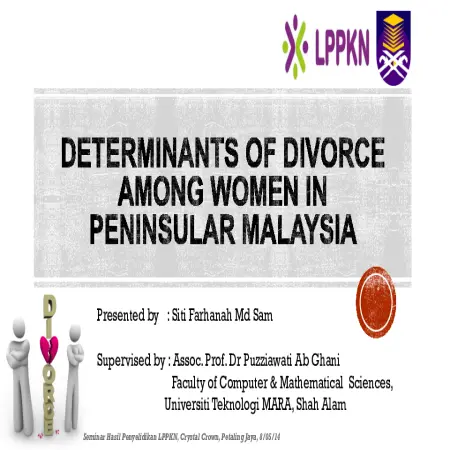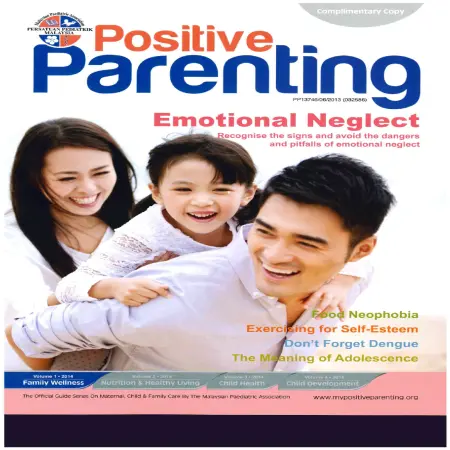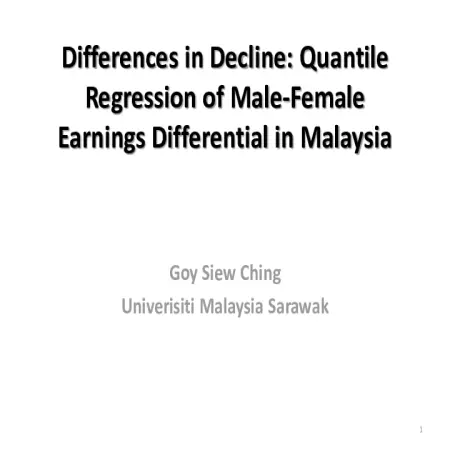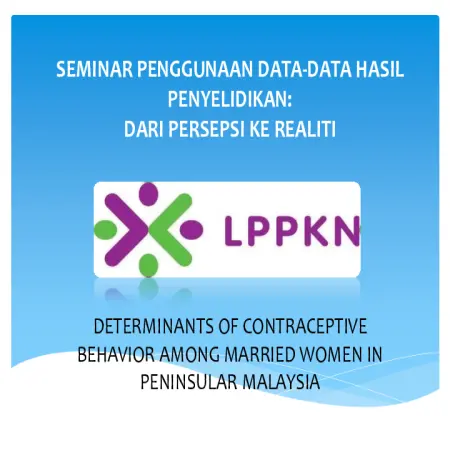Browse by Author
|
|
Determining important factors in Malaysian family well-being using tree-based classification techniques
Item Type: Book Section
Editor:
Year: 00/05/2021
Abstract: Tree-based classification techniques were used to identify the crucial factors influencing the Malaysian family well-being. Data from the nationwide survey, conducted by the National Population and Family Development Board (NPFDB) of Malaysia in 2011 were used for the analysis. Two types of tree-based classification techniques, which are the decision tree and bagging decision tree, were considered for this study.
|
|
|
|
|
|
Differentials in sexual and reproductive health knowledge among East Malaysian adolescents
Item Type: Article
Editor:
Year: 00/00/2019
Abstract: The aim of this study was to assess the knowledge of East Malaysian adolescents on sexual and reproductive health issues. Data were collected in March–July 2015 from 2858 adolescents aged 13–18 years from selected East Malaysian secondary schools using a self-administered questionnaire. Twelve items relating to sexual and reproductive health were used to measure respondents’ knowledge based on their responses ‘True’, ‘False’ or ‘Don’t know’, with the proportion of correct answers being the variable of interest. Cronbach’s alpha for the twelve items was 0.761 and the mean knowledge score was 6.8. While the majority of the respondents knew that a woman can get pregnant if she has sex with a man and that HIV and AIDS can be transmitted through sexual intercourse, knowledge about Malaysia’s abortion laws, that a woman can get pregnant if she has sex only once and that people with sexually transmitted infections may look healthy was poor. Older respondents and those from urban schools reported significantly higher knowledge than younger respondents and those from rural schools, respectively. More emphasis should be given in schools to the specific topics for which low levels of sexual and reproductive health knowledge were found, with greater attention being given to younger adolescents and those in rural areas.
|
|
|
|
|
|
Development of Malaysian women fertility index
Item Type: Article
Editor:
Year: 00/11/2018
Abstract: A fertility rate is a measure of the average number of children a woman will have during her childbearing years. Malaysia is now facing a population crisis and the fertility rate continues to decline. This situation will have implications for the age structure of the population where percentages of senior citizens are higher than percentages of people aged below 5 years old. Malaysia is expected to reach aging population status by the year 2035. As the aging population has a very long average life expectancy, the government needs to spend a lot on medical costs for senior citizens and need to increase budgets for pensions. The government may be required to increase tax revenues to support the growing older population. The falling fertility rate requires proper control by relevant authorities, especially through planning and implementation of strategic and effective measures. Hence, this paper aims to develop a fertility index using correlation and Shannon's entropy method. The results show that Selangor, Johor, and Sarawak are among the states with the highest values of the fertility index. On the other end of the spectrum, Terengganu, W.P. Labuan, and Perlis are ranked in the last positions according to the fertility index. The information generated from the results in this study can be used as a primary source for the government to design appropriate policies to mitigate dwindling fertility rates among Malaysian women.
|
|
|
|
|
|
Determinants of loneliness among elderly in Malaysia
Item Type: Conference or Workshop Item
Editor:
Year: 00/00/2016
Abstract: As of 2014, there is an estimated of 2.7 million elderly in Malaysia or 8.9% out of the total population of 30.3 million. Recent projections estimated that Malaysia will become an ageing nation by 2035 when 15% of the population falls into this group. As the number of the elderly population continues to grow, loneliness is becoming one of the major issues leading to impaired quality of life among elderly. Loneliness might lead to mental problems and stress among the elderly. This study attempts to examine the characteristics and influencing factors of loneliness among elderly in Malaysia. Data for this study is a sub-sample of a bigger national study gathered through the Fifth Malaysian Population and Family Survey (MPFS-5) conducted in 2014 by the National Population and Family Development Board Malaysia.
|
|
|
|
|
|
Disconnect digitally, reconnect emotionally
Item Type: Article
Editor:
Year: 00/00/2016
Abstract: Without a doubt, digital is the future. However, we do need to know where to draw the line and prevent ourselves from overindulging in it. Failure to do so could lead to digital addiction. It is fairly common nowadays to see parents handing their smartphone or tablet to their child to keep them entertained.
However, this is where parents will need to exercise self discipline on their part to avoid the pitfalls. As parents, you should lead by example and serve as a role model for your child to emulate as he grows. As the saying goes “Too much of a good thing is a bad thing!”
|
|
|
|
|
|
Determinant of marriage dissolution
Item Type: Conference or Workshop Item
Editor:
Year: 00/00/2014
Abstract: Nowadays, the number of divorce cases among Muslim couples is very worrisome whereby the total cases reported in 2013 increased by half of the total cases reported in the previous year. Thus, the objective of this study is to reveal the factors that contribute to the dissolution of marriage. A total of 181 cases and ten potential determinants were included in this study. The potential determinants considered were age at marriage of husband and wife, educational level of husband and wife, employment status of husband and wife, income of husband and wife, the number of children and the presence at a counseling session. Logistic regression analysis was used to analyze the data. The findings revealed that four determinants, namely the income of husband and wife, number of children and the presence at a counselling session were significant in predicting the likelihood of divorce among Muslim couples.
|
|
|
|
|
|
Determinants of divorce among women in Peninsular Malaysia
Item Type: Conference or Workshop Item
Editor:
Year: 00/00/2014
Abstract: Many studies concerning divorce had been conducted especially in the West to investigate the pattern of divorce as well factors that that are related to divorce. However, there is not much research work on divorce in Malaysia. Therefore, the objective of this study is to explore the divorce trend at the macro level based on the data provided by the Department of Islamic Development Board and National Registration Department of Malaysia. Based on the trend analysis, it demonstrates that the divorce rate in Malaysia has been rising during a period of 17 years from 1995 to 2010. In addition, the trend of divorce between Muslim and non-Muslim couples display a divergent pattern especially during the economic downturn. At the micro level, the Fourth Malaysian Population and Family Survey (MPFS IV) data obtained from the National Population and Family Development Board was utilized to identify the determinants of divorce among women in Peninsular Malaysia. The results based on Cox-Regression analysis show that age, age at marriage, the number of marriages and the existence of children are the significant factors that are related to divorce. Besides, irreconcilable differences, imprudent husbands and the meddling in-laws family are the reasons why couples end their marriages, as found from the MPFS IV data.
|
|
|
|
|
|
Defining child abuse and neglect
Item Type: Article
Editor:
Year: 00/00/2014
Abstract: Abuse and neglect are terms that are often used interchangeably. However, these terms represent two different types of abuse- abuse occurs when a person acts against a child (e.g. physical abuse) while neglect occurs when a person fails to act for a child (e.g. leaving a child at home without care.
|
|
|
|
|
|
Determinants of contraceptive behaviour among married women in Peninsular Malaysia
Item Type: Conference or Workshop Item
Editor:
Year: 00/00/2012
Abstract: Modelling the trends and patterns of contraceptive use have drawn great interests among researchers worldwide but the case is not so in Malaysia. This study models the relationship between contraceptive use and several socio-demographic factors that include age at first marriage, ethnic group, level of education, employment status, place of residence, and number of life birth, of married women in Malaysia. The objectives of this study are; to describe the trend of contraceptive behaviour according to socio-demographic factors that affect their decision in contraceptive practices and also to identify determinants of contraceptive use among married women in Malaysia. Based on the trend analysis, the study indicates that there is an increasing pattern of women delaying marriage. The general trend of contraceptive use also indicates that there have been changes in the behaviour of users according to selected socio-demographic characteristics across these surveys. Specifically, Malay women are more likely to practice family planning compared to Chinese and Indian women. The overall trend across ethnic group shows that Malay contraceptive users’ behaviour were in contrast with that of Chinese users in most aspects. Favourable contraceptive methods among Malaysian women were oral and traditional methods. Binary logistic regression was applied to identify the determinants of Malaysian women’s decision in birth control practice. Multinomial logistic regression was also applied to estimate the probability of favourable contraceptive method among these women in their contraceptive practice. Based on this study, it is found that among all selected socio-demographic characteristics, women’s employment had no significant effect on women’s decision in contraceptive practice and their choice of contraceptive method. This study has also discovered that women’s age, their age at first marriage, women’s desire to have more children, number of pregnancies, educational attainment, and ethnicity are determinants that significantly influence Malaysianwomen’s decision towards contraceptive practice and their choice of contraceptive method.
|
|
|
|






